It’s one of the most legendary seshes in history: the night that Bob Dylan got The Beatles stoned for the first time and changed the course of their career – and by extension, popular music – forever. Here’s how that historic encounter allegedly went down, as compiled from the various perspectives of those who were there.
THE SETUP
On August 28, 1964, The Beatles played the first of two sold-out shows at the Forest Hills Music Festival in Queens, New York. After the concert, they headed back to The Delmonico Hotel on Park Avenue near Central Park. There, throngs of overzealous fans restrained by barricades awaited them out front, while inside, police patrolled the lobby and corridors to prevent any incidents.
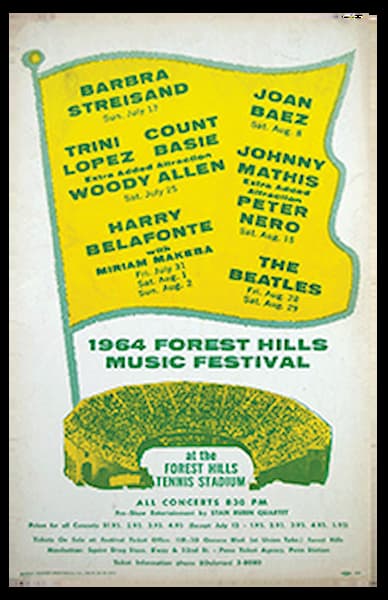
Once in their suites on the sixth floor, the band was relaxing and enjoying some dinner with their manager Brian Epstein and personal assistant Neil Aspinall. Soon to join them was folk rock superstar Bob Dylan, who was being driven down from Woodstock by his road manager Victor Maymudes for the occasion. On the way, they’d stopped to pick up writer Al Aronowitz – a mutual friend of Dylan and The Beatles – who had arranged the momentous meeting.
Upon arriving, Dylan’s posse was stopped by police, who, having no idea who they were, wouldn’t allow them into the elevator until Beatles’ road manager Mal Evans came down to escort them up.
MCCARTNEY’S MEMORY
According to quotes compiled from his memoir “The Lyrics: 1956 to the Present” and different interviews he’s done over the years, here’s how McCartney remembers the meeting:
“We were in a hotel suite … and Bob Dylan turned up with his roadie. …We’d ordered drinks from room service – scotch and Coke and French wine were our thing back then – and Bob had disappeared into a back room… we thought maybe he’d gone to the toilet. But then Ringo [Starr] came out of that back room looking a bit strange. He said, ‘I’ve just been with Bob, and he’s got some pot!’ And we said, ‘Oh, what is it like?’ And he said, ‘Well, the ceiling is sort of moving, coming down.’ And that was enough. We all ran into the back room, going, ‘Give us a bit, give us a bit!’ … And he gave us a puff on the joint.”
ALTERNATE ACCOUNTS
According to others in attendance, however, events unfolded a bit differently.
In his Beatles biography titled “The Love You Make: An Insider’s Story Of The Beatles,” Epstein’s assistant Peter Brown gives a more detailed account. According to Brown, after their introduction, Dylan was offered the drinks they had on hand, but only wanted cheap wine – which Evans was then asked to procure. They also offered Dylan and Aronowitz some “purple hearts” [a type of upper], which they politely declined – instead, suggesting they all smoke some weed. Upon hearing Dylan’s offer, The Beatles all looked at each other, then at Epstein, who timidly admitted, “We’ve never smoked marijuana before.”
In reality, that wasn’t entirely true: The boys had actually tried smoking pot a few years earlier in 1960 but apparently didn’t get high from it, as George Harrison would later recount in “The Beatles Anthology”:
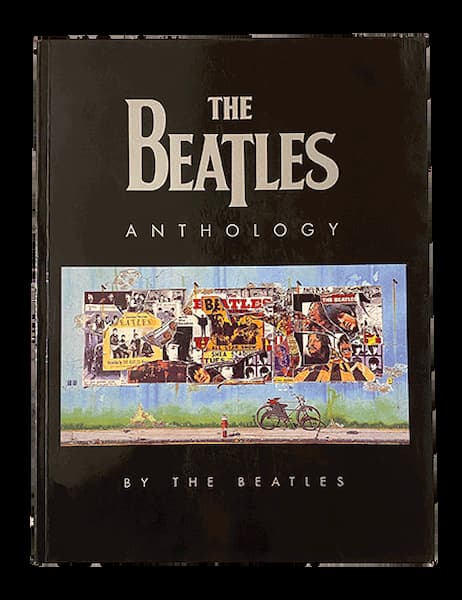
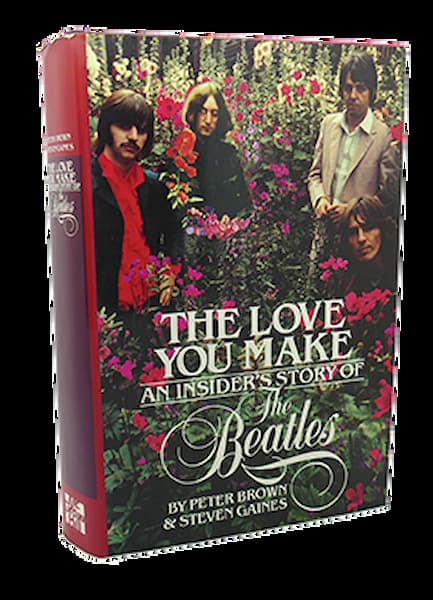
“We first got marijuana from an older drummer with another group in Liverpool. We didn’t actually try it until after we’d been to Hamburg. I remember we smoked it in the band room in a gig in Southport. … Everybody was saying, ‘This stuff isn’t doing anything.’ It was like that old joke where a party is going on, and two hippies are up floating on the ceiling, and one is saying to the other, ‘This stuff doesn’t work, man.’”
In any case, Brown makes it clear that The Beatles’ lack of experience took Dylan by surprise:
Dylan looked disbelievingly from face to face. “But what about your song?” he asked. “The one about getting high?”
The Beatles were stupefied. “Which song?” John managed to ask.
Dylan said, “You know …” and then he sang, “And when I touch you, I get high, I get high …”
John flushed with embarrassment. “Those aren’t the words,” he admitted. “The words are, ‘I can’t hide, I can’t hide, I can’t hide …’”
At that moment, Dylan no doubt realized it would now be his historic duty to get The Beatles high for the first time. Luckily, Maymudes had brought along a “sizable bag” of weed for just such a situation. Wary of the substantial police presence in the halls, though, Dylan suggested the group adjourn into one of the adjoining bedrooms.
THE SESH
When it comes to who rolled the joints, once again, accounts vary. According to some, it was Maymudes who did the rolling. According to beatlesbible.com, however, it was Dylan: “Aronowitz was unskilled in rolling joints, so asked Dylan to do the honours; Dylan wasn’t much better, and much of the grass ended up in a fruit bowl on the room service table.”
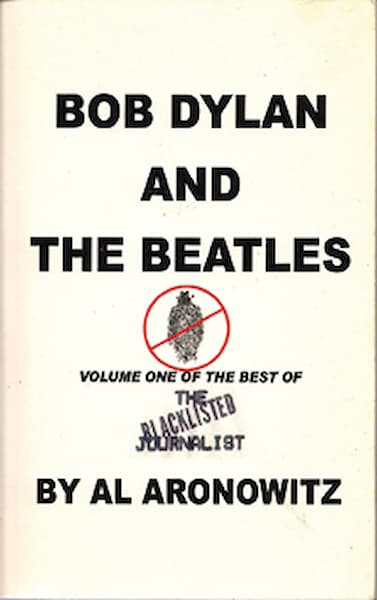
“Bob hovered unsteadily over the bowl as he stood at the table while he tried to lift the grass from the baggie with the fingertips of one hand so he could crush it into the leaf of rolling paper which he held in his other hand,” Aronowitz wrote in his book “Bob Dylan and The Beatles.” “In addition to the fact that Bob was a sloppy roller to begin with, what Bob had started drinking had already gotten to him.”
Regardless, most seem to agree it was Dylan who lit the first joint, then handed it to Lennon, who declined – instead passing it on to his ‘royal taster’ Ringo. Unaware of stoner etiquette, Starr allegedly smoked the entire thing himself rather than passing it around the circle, prompting Maymudes to then roll everyone their joints. They all began smoking, and before long, as Starr told Conan O’Brien in 2012, “We got high and laughed our asses off.”
“We expected something instantaneous, so we kept puffing away and saying, ‘It’s not working, is it?’” McCartney wrote in his memoir. “And suddenly, it was working. And we were giggling, laughing at each other.”
“I don’t remember much what we talked about,” Lennon later said in “The Beatles Anthology.” “We were smoking dope, drinking wine, and generally being rock ‘n’ rollers and having a laugh, you know, and surrealism. It was party time.”
Here’s how The Guardian’s Andrew Harrison set the scene: “Ringo Starr … collapsed in a giggling mess. Brian Epstein became so stoned he could only squeak, ‘I’m so high, I’m up on the ceiling.’ Paul McCartney believed he’d attained true mental clarity for the first time in his life and instructed Beatles’ roadie and major-domo Mal Evans to write down everything he said henceforth. Dylan, meanwhile, lost his cool and began answering the hotel phone by shouting, ‘This is Beatlemania here!’”
In the 1997 biography “Many Years From Now,” McCartney elaborates on his perceived pot-induced profundity, during which he repeatedly declared that he was “thinking for the first time, really thinking.”
“I’d been going through this thing of levels during the evening,” McCartney writes. “Mal gave me this little slip of paper in the morning, and written on it was, ‘There are seven levels!’ […] And we pissed ourselves laughing. I mean, ‘What the fuck’s that? What the fuck are the seven levels?’”

In his book “Another Side of Bob Dylan: A Personal History on the Road and Off the Tracks,” Maymudes reported that McCartney enjoyed the experience so much that “The following morning, Paul came up to me and hugged me for 10 minutes and said, ‘It was so great … it’s all your fault because I love this pot!’ He went into his thoughts on music while on it and how it made him feel. ‘It was just magical,’ he said.”
“We thought, ‘Wow, this is pretty amazing, this stuff,’’’ McCartney’s memoir reads. “So it became part of our repertoire from then on.”
UNDER THE INFLUENCE
From that day forward, The Beatles began consuming Cannabis on an almost daily basis – using the expression “let’s have a larf” as a 420-like code for “let’s get high.”
“The Beatles had gone beyond comprehension,” Lennon once confessed. “We were smoking marijuana for breakfast. We were well into marijuana, and nobody could communicate with us; we were just glazed eyes, giggling all the time.”
The band’s newfound love for the herb quickly manifested in their music – crediting both Dylan and marijuana as influences on their next record, “Rubber Soul,” with Lennon going as far as referring to it as their “pot album.” Their follow-up, 1966’s “Revolver,” included the song “Got to Get You Into My Life” – which McCartney eventually admitted was “entirely about pot.”
“This song is my ode to pot,” Paul said on BBC Radio in 2021. “What we had to get into our lives, it seems, was marijuana … it was something that entered our lives, and I thought it was a good idea to write a song. Only I’d know that I was talking about pot.”
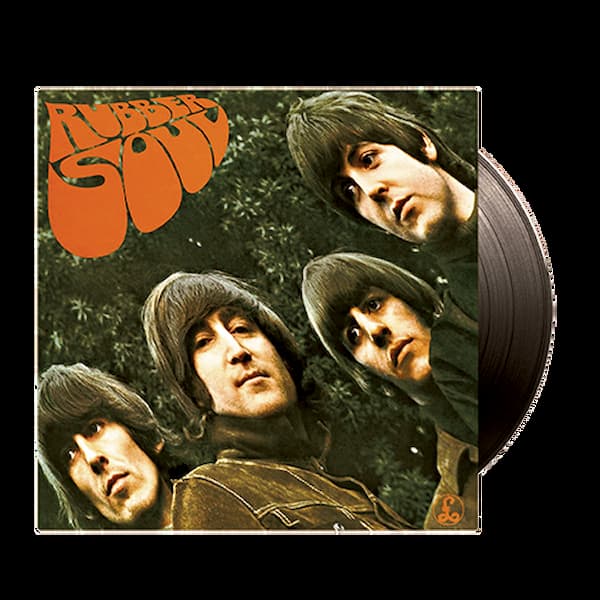

Marijuana’s influence was even more blatant in their 1967 masterpiece “Sgt. Pepper’s Lonely Hearts Club Band” – with Ringo signing about “getting high with a little help” from his friends, and McCartney singing about how he “had a smoke” and “went into a dream” in “A Day in the Life.”
“Do you know what caused ‘Pepper?’” McCartney once told a reporter. “In one word: drugs. Pot. ‘Sgt. Pepper’ was a drug album.”
Though exact accounts of their first sesh may remain a bit foggy, one thing appears crystal clear: Cannabis affected the Beatles in a profound way – infusing their music with introspective complexity and transforming them from mere pop performers into the revolutionary artists they were destined to become.










